Experiment Study on Topological Characteristics of Sandstone Coating by Micro CT
Abstract
1. Introduction
2. Basic Information of Sandstone Pore Network
2.1. Sandstone Network Extraction
2.2. Basic Parameters of Sandstone Networks in Complex Network Theory
3. Sandstone Network Structure Analysis in Complex Network Theory
4. Conclusions
- (1)
- The results show that a scale-free model is more suitable for the degree distribution of the sandstone seepage network. Without considering pore volume and pore throat volume weight, the overall permeability of the network may be determined by a small number of pores with large degree (number of connections with other pores).
- (2)
- The modular degree Q of the pore network of different porosity sandstone tends to 1, which means that the pore network of sandstone has an obvious modularized structure. According to the network topology, the sandstone network can be divided into several relatively independent communities. The associations within the community are closely connected, and have strong permeability, while the connection between communities is less, which inhibits the overall permeability of sandstone.
- (3)
- The aggregation coefficients of different sandstone pore networks are mainly distributed between 0 and 0.5. The connectivity of the sandstone pore network is far less than that of fully coupled networks with all nodes connected. That is, the sandstone has a strong antireflection potential.
Author Contributions
Funding
Conflicts of Interest
References
- Chen, P.; Chen, S.; Peng, J.; Gao, F.; Liu, H. The interface behavior of a thin film bonded imperfectly to a finite thickness gradient substrate. Eng. Fract. Mech. 2019, 217, 106529. [Google Scholar] [CrossRef]
- Lou, L.; Chen, P.; Wang, Z.; Zhang, S.; Gao, F. Cohesive energy measurement of van der Waals heterostructures by the shaft loaded blister test. Extreme Mech. Lett. 2020, 41, 100987. [Google Scholar] [CrossRef]
- Chen, P.; Chen, S.H.; Liu, H.; Peng, J.; Gao, F. The interface behavior of multiple piezoelectric films attaching to a finite-thickness gradient substrate. J. Appl. Mech. Trans. ASME 2020, 87, 011003. [Google Scholar] [CrossRef]
- Blunt, M.J.; Bijeljic, B.; Hu, D.; Gharbi, O.; Iglauer, S.; Mostaghimi, P.; Paluszny, A. ChristopherPentlan Pore-scale imaging and modelling. Adv. Water Resour. 2013, 51, 197–216. [Google Scholar] [CrossRef]
- Arand, F.; Hesser, J. Accurate and efficient maximal ball algorithm for pore network extraction. Comput. Geosci. 2017, 101, 28–37. [Google Scholar] [CrossRef]
- Bauer, B.; Cai, X.; Peth, S.; Schladitz, K.; Steidl, G. Variational-based segmentation of bio-pores in tomographic images. Comput. Geosci. 2017, 98, 1–8. [Google Scholar] [CrossRef]
- Chen, P.; Peng, J.; Chen, Z.; Peng, G. On the interfacial behavior of a piezoelectric actuator bonded to a homogeneous half plane with an arbitrarily varying graded coating. Eng. Fract. Mech. 2019, 220, 106645. [Google Scholar] [CrossRef]
- Liu, G.; Yu, B.; Gao, F.; Ye, D.; Yue, F. Analysis of permeability evolution characteristics based on dual fractal coupling model for coal seam. Fractals 2020, in press. [Google Scholar] [CrossRef]
- Li, K.; Kong, S.; Xia, P.; Wang, X. Microstructural characterisation of organic matter pores in coal-measure shale. Adv. Geo-Energy Res. 2020, 4, 372–391. [Google Scholar] [CrossRef]
- Li, Z.; Duan, Y.; Fang, Q.; Wei, M. A study of relative permeability for transient two-phase flow in a low permeability fractal porous medium. Adv. Geo-Energy Res. 2018, 2, 369–379. [Google Scholar] [CrossRef][Green Version]
- Qin, X.; Zhou, Y.; Sasmito, A.P. An effective thermal conductivity model for fractal porous media with rough surfaces. Adv. Geo-Energy Res. 2019, 3, 149–155. [Google Scholar] [CrossRef]
- Zeng, J.; Liu, J.; Li, W.; Leong, Y.K.; Elsworth, D.; Guo, J. Evolution of shale permeability under the influence of gas diffusion from the fracture wall into the matrix. Energy Fuels 2020, 34, 4393–4406. [Google Scholar] [CrossRef]
- Li, W.; Liu, J.; Zeng, J.; Leong, Y.K.; Elsworth, D.; Tian, J.; Li, L. A fully coupled multidomain and multiphysics model for evaluation of shale gas extraction. Fuel 2020, 278, 118214. [Google Scholar] [CrossRef]
- Li, W.; Liu, J.; Zeng, J.; Leong, Y.K.; Elsworth, D. A fully coupled multidomain and multiphysics model for shale gas production. In Proceedings of the 5th ISRM Young Scholars’ Symposium on Rock Mechanics and International Symposium on Rock Engineering for Innovative Future, Okinawa, Japan, 1–4 December 2019. [Google Scholar]
- Liu, G.; Yu, B.; Ye, D.; Gao, F.; Liu, J. Study on evolution of fractal dimension for fractured coal seam under multi field coupling. Fractals 2020, 28, 2050072. [Google Scholar] [CrossRef]
- Zeng, J.; Wang, X.; Guo, J.; Zeng, F.; Zeng, F. Modeling of heterogeneous reservoirs with damaged hydraulic fractures. J. Hydrol. 2019, 574, 774–793. [Google Scholar] [CrossRef]
- Raeini, A.Q.; Bijeljic, B.; Blunt, M.J. Generalized network modeling: Network extraction as a coarse-scale discretization of the void space of porous media. Phys. Rev. E 2017, 96, 013312. [Google Scholar] [CrossRef]
- Shaina, K.; Hesham, E.; Carlos, T.; Balhoff, M.T. Assessing the utility of FIB-SEM images for shale digital rock physics. Adv. Water Resour. 2015, 18, 302–316. [Google Scholar]
- Hajizadeh, A.; Safekordi, A.; Farhadpour, F.A. multiple-point statistics algorithm for 3D pore space reconstruction from 2D images. Adv. Water Resour. 2011, 34, 1256–1267. [Google Scholar] [CrossRef]
- Civan, F.; Rai, C.S.; Sondergeld, C.H. Shale-gas permeability and diffusivity inferred by improved formulation of relevant retention and transport mechanisms. Transp. Porous Media 2011, 86, 925–944. [Google Scholar] [CrossRef]
- Zhang, T.Y.; Li, D.L.; Yang, J.Q. A study of the effect of pore characteristic on permeability with a pore network model. Pet. Sci. Technol. 2013, 31, 1790–1796. [Google Scholar] [CrossRef]
- Ju, Y.; Zheng, J.; Marcelo, E.; Sudak, L.; Wang, J.; Zhao, X. 3D numerical reconstruction of well-connected porous structure of rock using fractal algorithms. Comput. Meth. Appl. Mech. Eng. 2014, 279, 212–226. [Google Scholar] [CrossRef]
- Gong, L.; Nie, L.; Xu, Y. Geometrical and Topological Analysis of Pore Space in Sandstones Based on X-ray Computed Tomography. Energies 2020, 13, 3774. [Google Scholar] [CrossRef]
- Iassonov, P.; Gebrenegus, T.; Tuller, M. Segmentation of X-ray computed tomography images of porous materials: A crucial step for characterization and quantitative analysis of pore structures. Water Resour. Res. 2009, 45, W09415. [Google Scholar] [CrossRef]
- Liu, K.; Ostadhassan, M.; Zhou, J.; Gentzis, T.; Rezaee, R. Nanoscale pore structure characterization of the Bakken shale in the USA. Fuel 2017, 209, 567–578. [Google Scholar] [CrossRef]
- Yao, J.; Wang, C.C.; Yang, Y.F.; Sun, H. The Construction method and microscopic flow simulation of carbonate dual pore network model. Sci. Sin. Phys. Mech. Astron. 2013, 43, 896–902. [Google Scholar] [CrossRef]
- Zhang, Z.; Shi, Y.; Li, H.; Jin, H. Experimental study on the pore structure characteristics of tight sandstone reservoirs in Upper Triassic Ordos Basin China. Energy Explor. Exploit. 2016, 34, 418–439. [Google Scholar] [CrossRef]
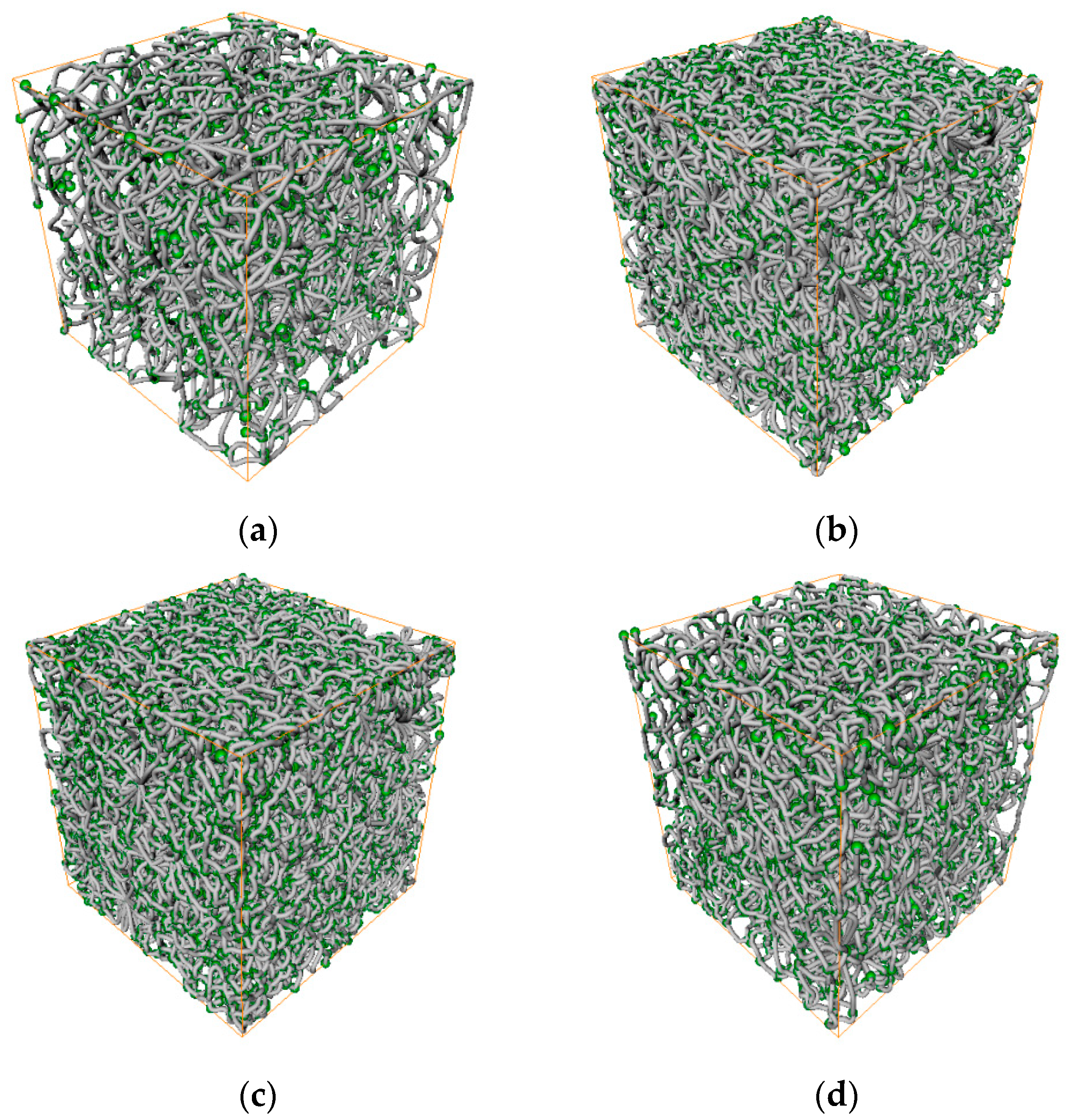
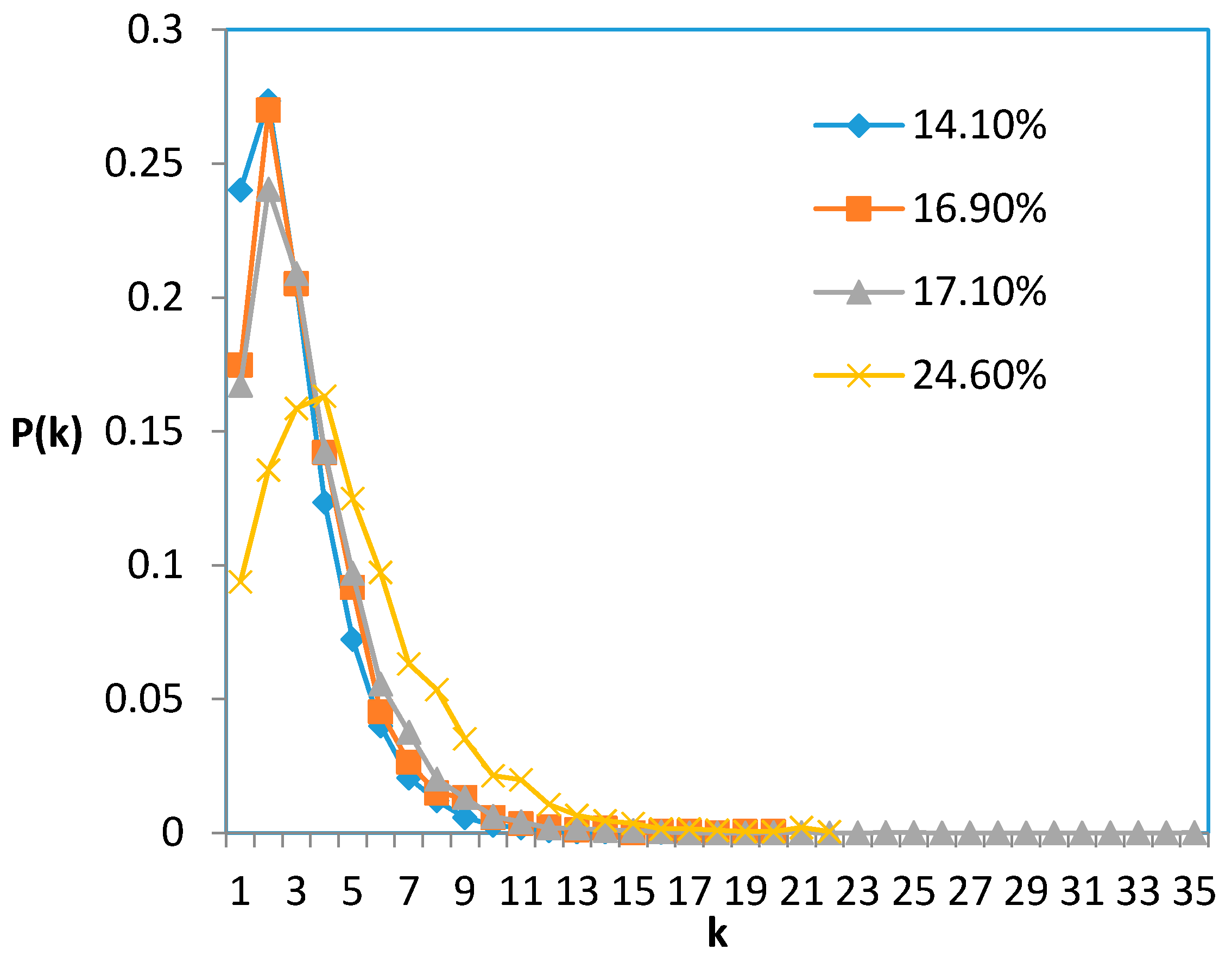

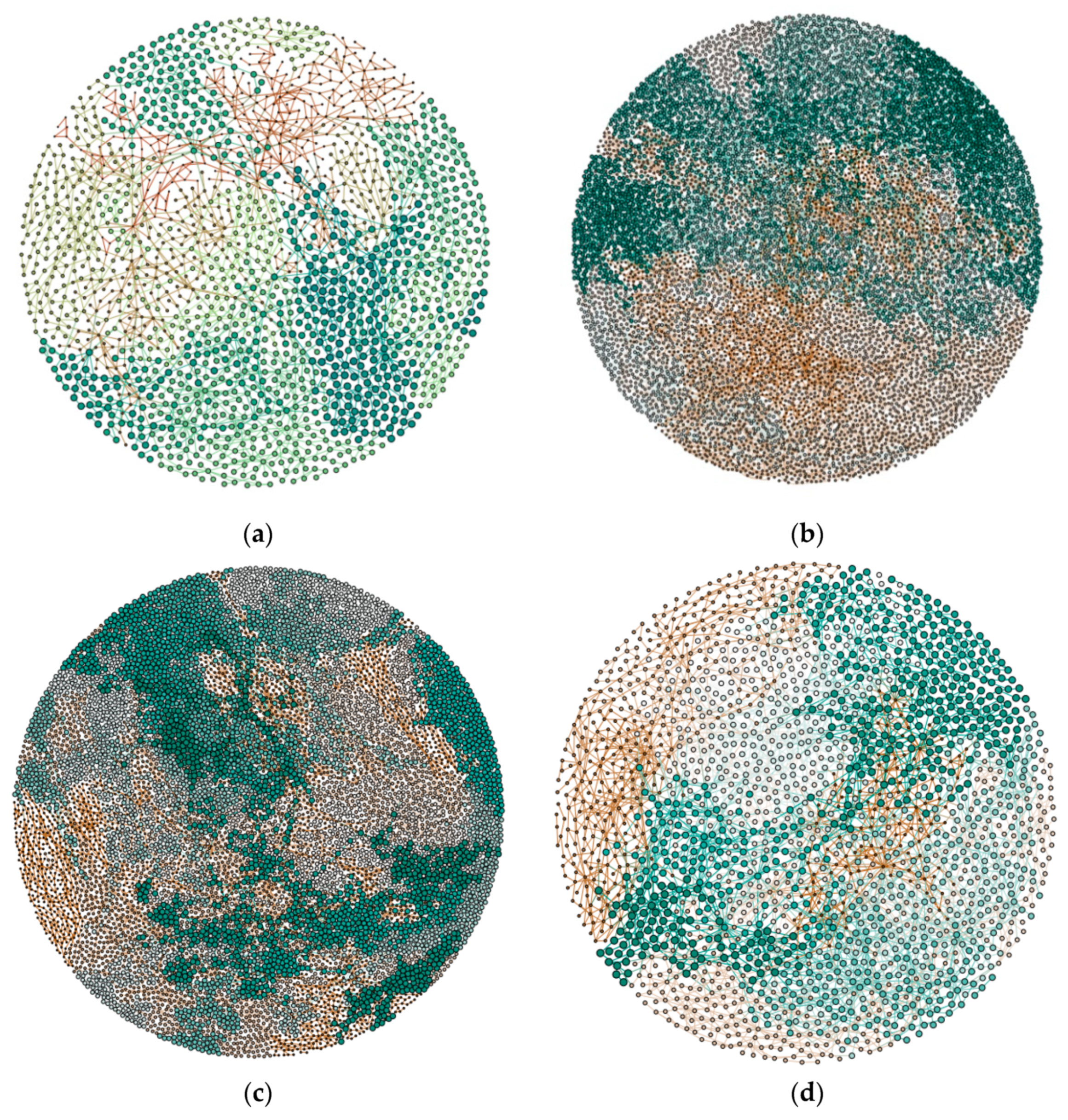
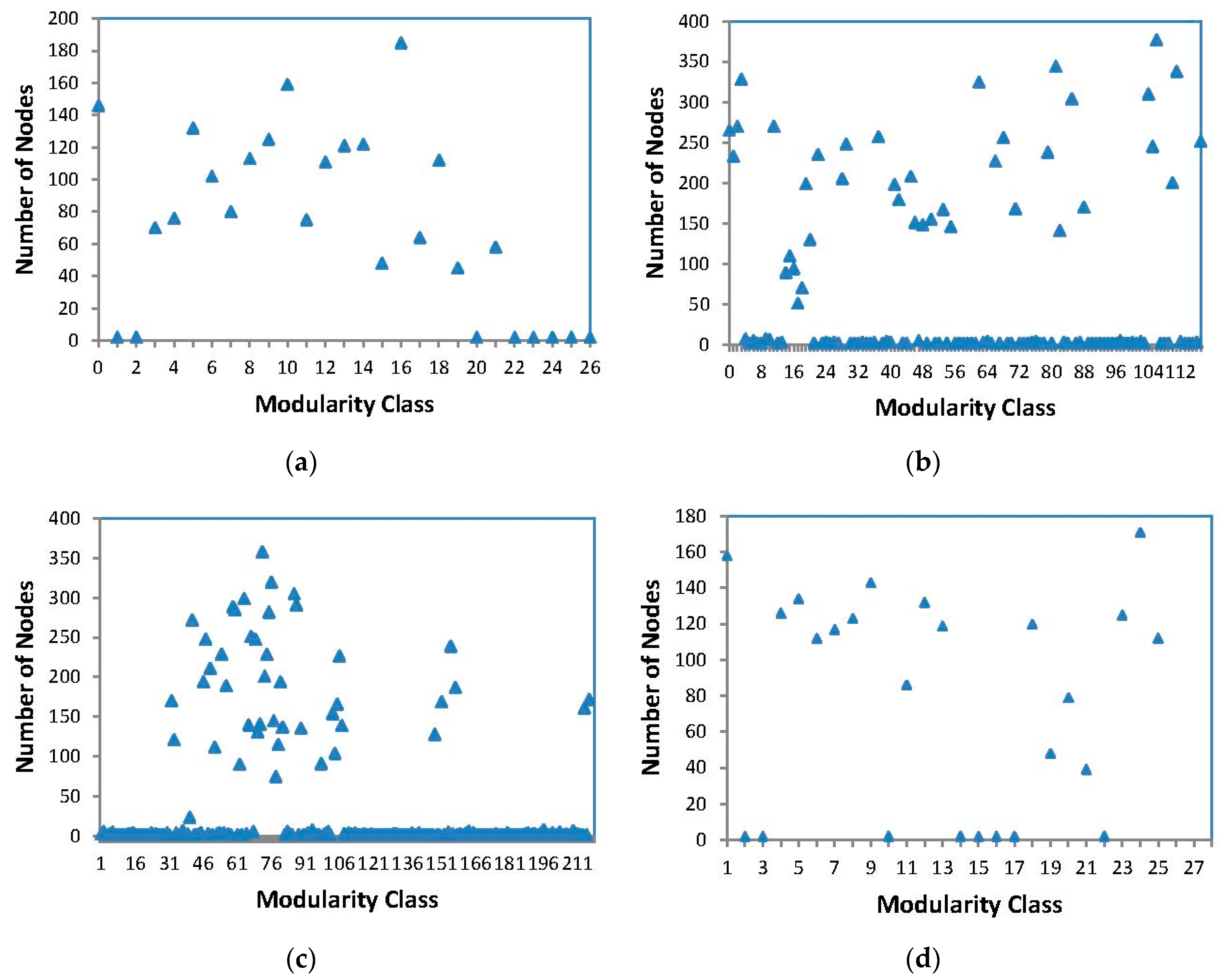
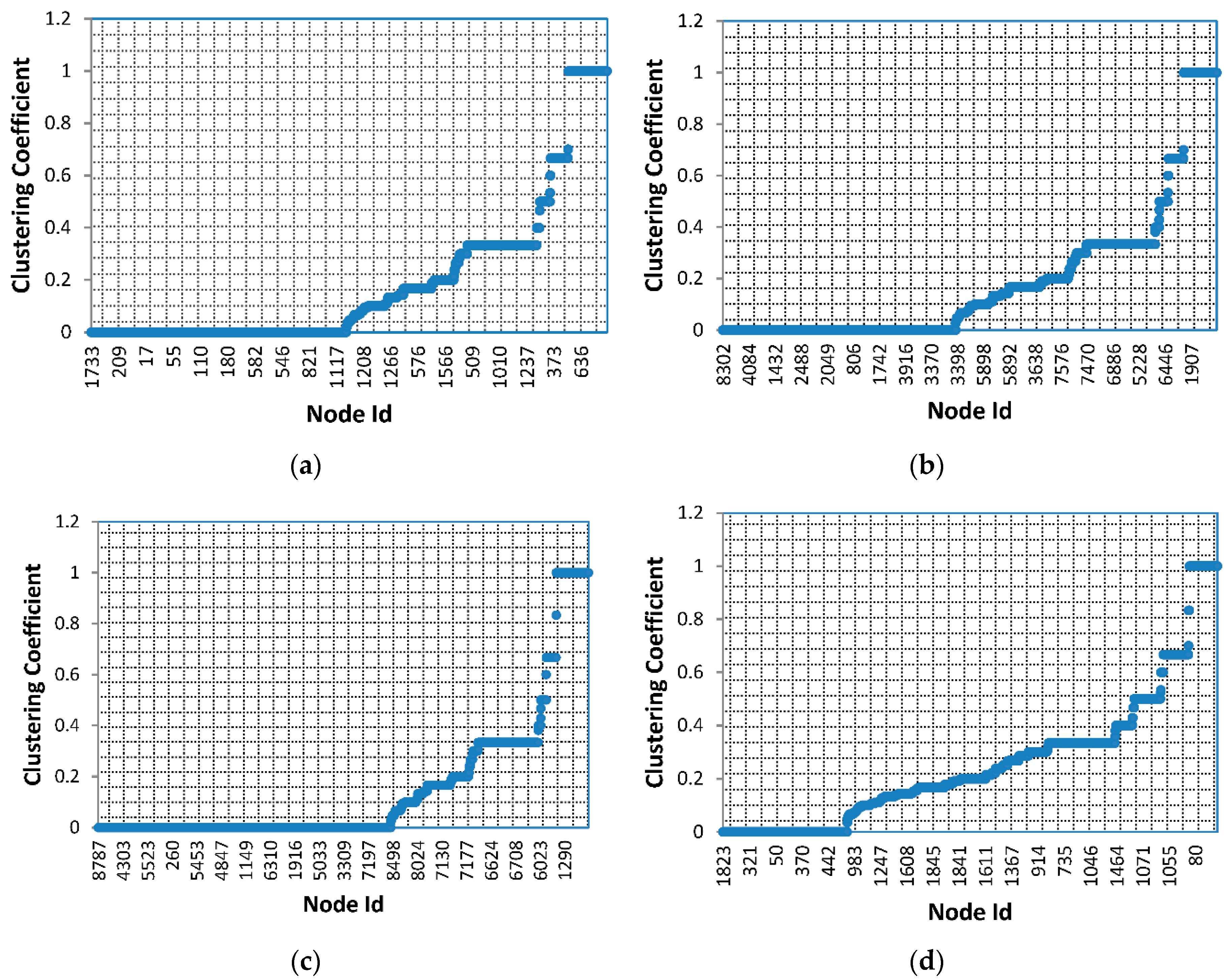
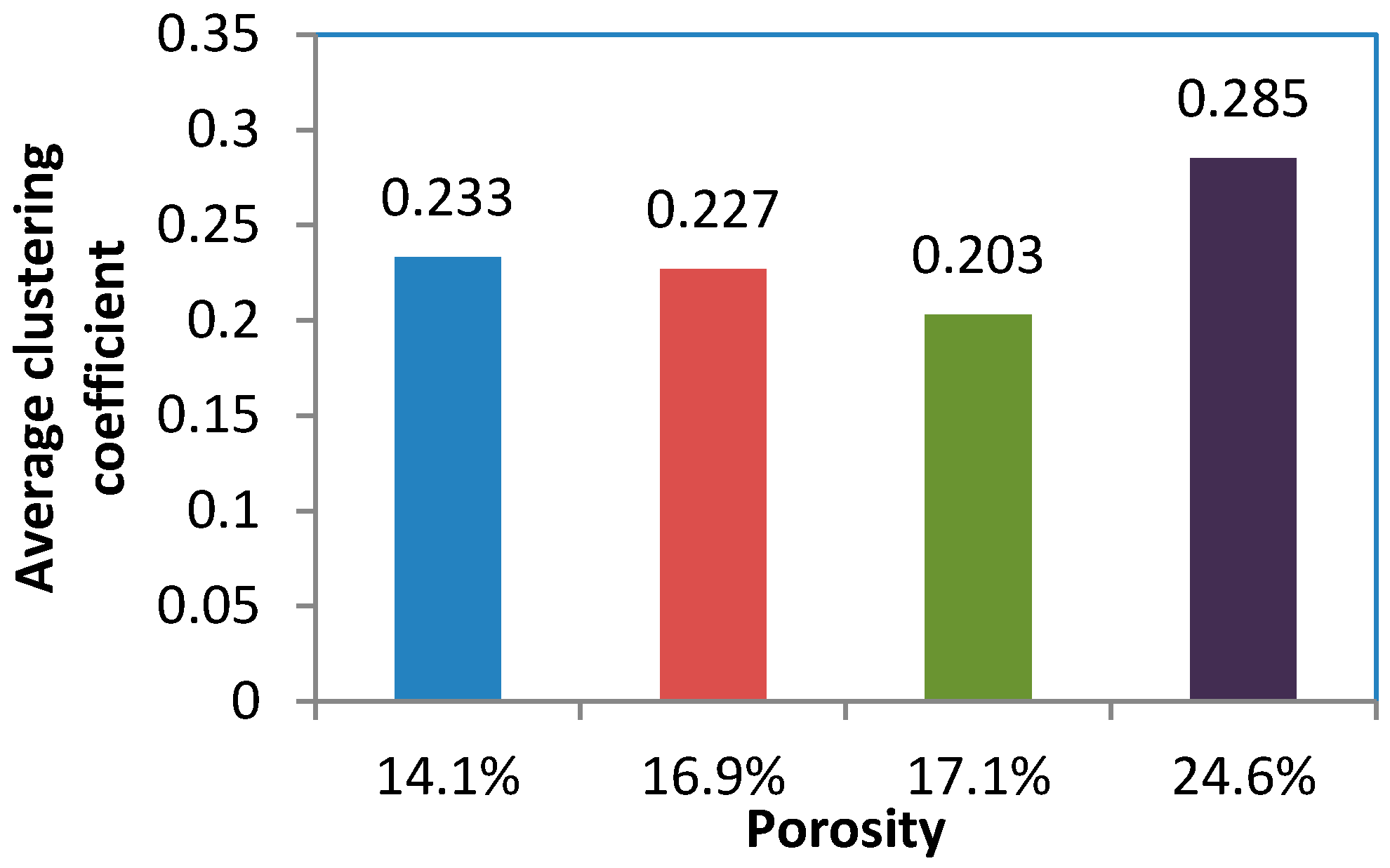

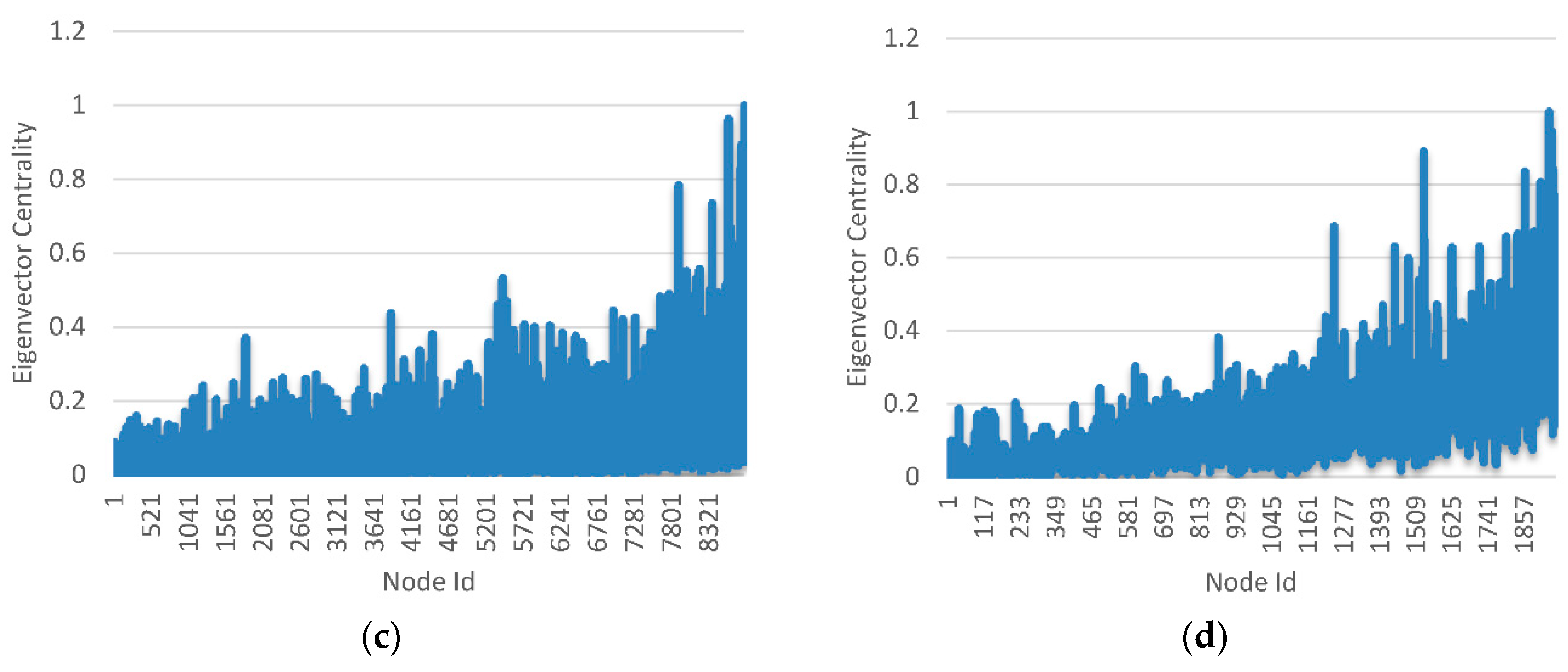
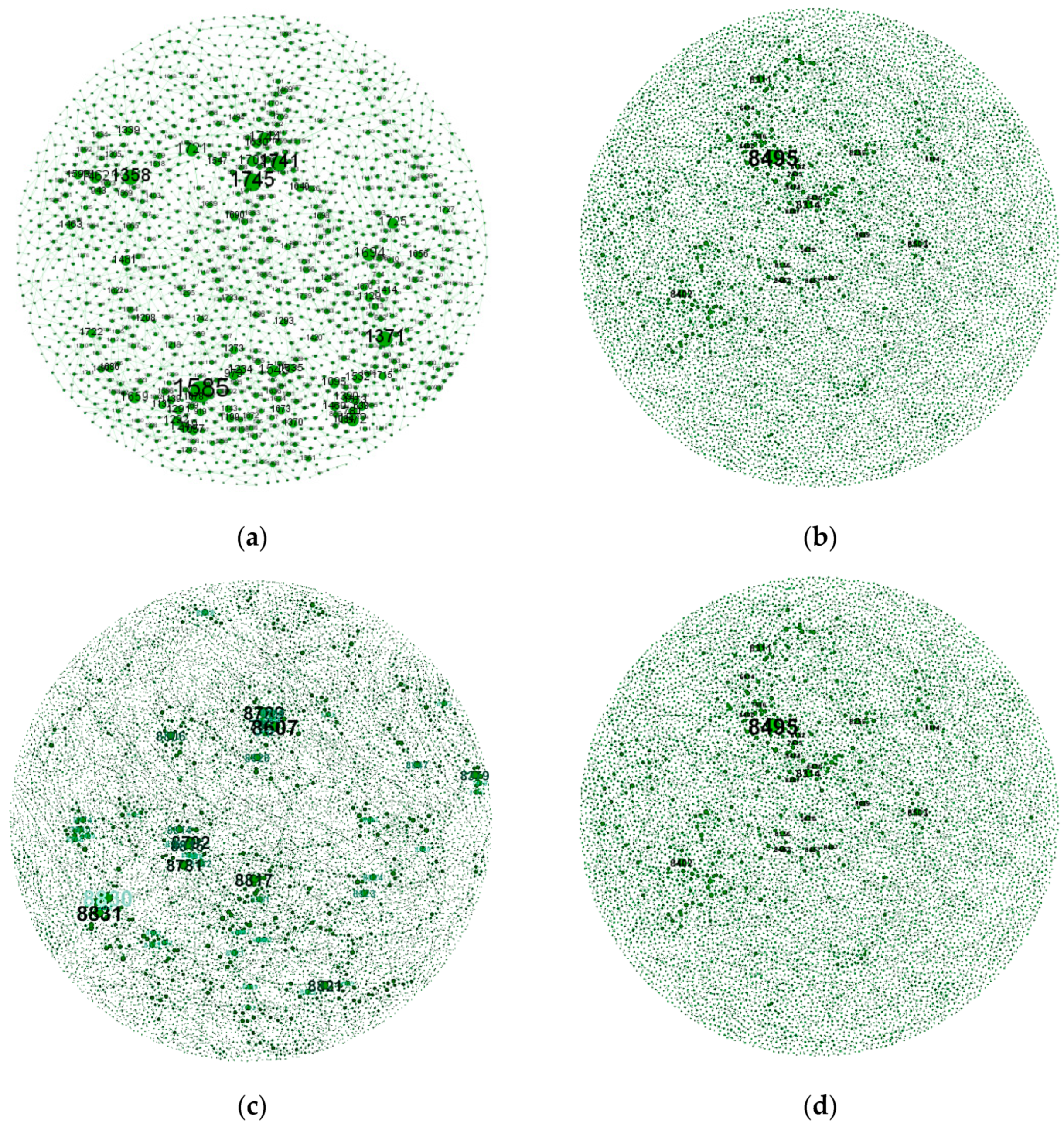
| Porosity | Node Number | Edge Number | Average Degree | Network Diameter | Average Path Length | Network Density |
|---|---|---|---|---|---|---|
| 14.1% | 1717 | 2824 | 3.289 | 25 | 10.151 | 0.002 |
| 16.9% | 8301 | 14,381 | 3.465 | 46 | 16.469 | 0 |
| 17.1% | 8542 | 12,432 | 2.962 | 50 | 19.428 | 0 |
| 24.6% | 1945 | 4697 | 4.83 | 22 | 8.466 | 0.002 |
| Differences between the Sources | SS | df | MS | F | p-Value | F Crit |
|---|---|---|---|---|---|---|
| between groups | 0.006105 | 1 | 0.006105 | 3.798787 | 0.09919 | 5.987378 |
| within the same group | 0.009643 | 6 | 0.001607 | - | - | - |
| sum | 0.015748 | 7 | - | - | - | - |
Publisher’s Note: MDPI stays neutral with regard to jurisdictional claims in published maps and institutional affiliations. |
© 2020 by the authors. Licensee MDPI, Basel, Switzerland. This article is an open access article distributed under the terms and conditions of the Creative Commons Attribution (CC BY) license (http://creativecommons.org/licenses/by/4.0/).
Share and Cite
Gao, F.; Hu, Y.; Liu, G.; Yang, Y. Experiment Study on Topological Characteristics of Sandstone Coating by Micro CT. Coatings 2020, 10, 1143. https://doi.org/10.3390/coatings10121143
Gao F, Hu Y, Liu G, Yang Y. Experiment Study on Topological Characteristics of Sandstone Coating by Micro CT. Coatings. 2020; 10(12):1143. https://doi.org/10.3390/coatings10121143
Chicago/Turabian StyleGao, Feng, Yuhao Hu, Guannan Liu, and Yugui Yang. 2020. "Experiment Study on Topological Characteristics of Sandstone Coating by Micro CT" Coatings 10, no. 12: 1143. https://doi.org/10.3390/coatings10121143
APA StyleGao, F., Hu, Y., Liu, G., & Yang, Y. (2020). Experiment Study on Topological Characteristics of Sandstone Coating by Micro CT. Coatings, 10(12), 1143. https://doi.org/10.3390/coatings10121143





